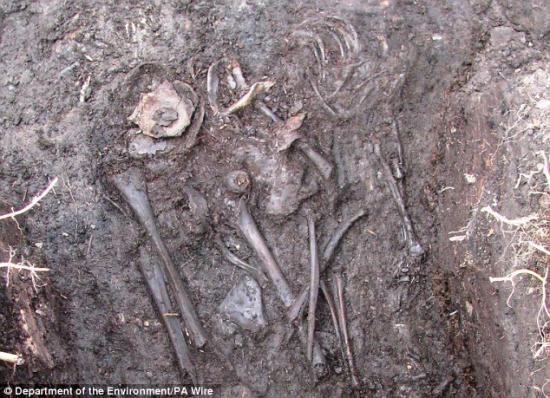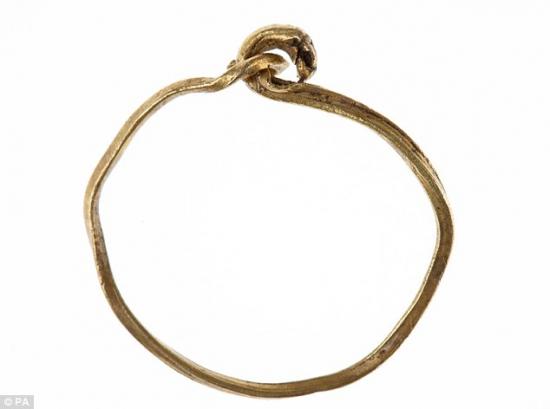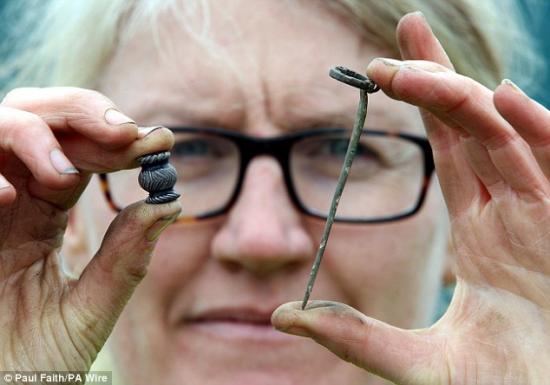Archaeologists uncover body of teenage girl among 4,000 artefacts which have been preserved beneath the soil for 600 years
Natasha Culzac
Source - http://www.dailymail.co.uk/sciencetech/article-2308975/600-year-old-murder-mystery-skeleton-woman-buried-outside-traditional-graveyards.html
Archaeologists have uncovered the body of a woman who may be at the centre of a 600-year-old murder mystery.
The find, as well as 4,000 other artefacts hidden within a medieval and long-forgotten settlement, only came to light during the development of a section of road in Northern Ireland.
For the last ten months excavators have been amassing numerous items taken from the site, which will now be preserved and hopefully one day displayed to the public.

Quick work: 'Dr Bermingham said: 'Because of the preservation here it means we have a wealth of material that we wouldn't normally find in an archaeological context, be that Ireland or anywhere in Europe'

Sticky end: It is unknown how or why the woman died, with archaeologists inspecting the remains further
In spite of the finds, heavy plant diggers are expected to return tomorrow to concrete over the site in Enniskillen, Co Fermanagh, to make way for a new link road in time for a G8 summit held there in June.
The new transport route has, since the discovery, met with fierce opposition from residents who consider the 1,400-year-old Drumclay Crannog - and its pristine relics - as a once-in-a-lifetime opportunity to reveal knowledge of the community previously unheld.
The body of the woman, who it is thought died around the 15th or 16th Century, was in her late teens when she met her fate. Because she was not buried in either a recognised graveyard or in a traditional manner it has led archaeologists to consider foul play.
Speaking of the dig as a whole, excavation director Dr Nora Bermingham said: 'I think it would be fair to say that this is probably the pinnacle of my archaeological career and I would say everybody here knows that they are working on an incredible excavation that we probably won't see the like of again.'

Discovery: This gold ring was also plucked from the earth at the site where it has lain undiscovered for centuries
Other objects of antiquity preserved under the man-made wooden island have included a medieval board game, a gold ring, carved bowls, leather shoes and finely-decorated metal dress pins.
More than 2,000 people visited the dig on three public open days.
Carbon dating has confirmed that many of the ornamental and household items go back as far as 670AD. The last occupants are believed to have abandoned the site in the 17th Century.
'It's the extraordinary preservation here that makes this site so special,' said Dr. Bermingham.
The clay-rich wetlands under which the remains had been buried, had protected it from the oxygen required for decomposition.
Despite wide-spread joy at the findings Dr John O'Keeffe, principal inspector of historic monuments with Stormont's Department of the Environment insisted that long-term preservation was not practicable or economically-viable. He said: 'Whenever the lid has been kept on a site, it's intact, it's not decaying. Once you take the lid off and stir it around a little bit it starts to decay again.
'If we were to stop today and try to freeze frame the site it wouldn't work. In order for it to work we would need to intervene with new protections on the ground which are massively expensive.'

Discoveries: Excavation director Dr Nora Bermingham with a bead and a clothes pin